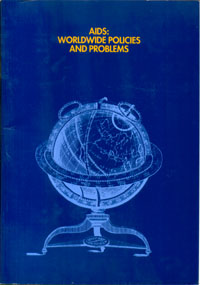Unlocking the Value of Combination Therapies

The condition which was later to be called AIDS emerged in the early 1980s in several widely separated locations, including the United States, Haiti, Belgium, France, Zaire and Zambia. The first medical reports, relating to a cluster of cases among homosexual men in…
The condition which was later to be called AIDS emerged in the early 1980s in several widely separated locations, including the United States, Haiti, Belgium, France, Zaire and Zambia. The first medical reports, relating to a cluster of cases among homosexual men in the United States, appeared in 1981. Less than 10 years later, the cumulative total of cases reported to the World Health Organisation had reached 334,216 by March 1991. Very few countries of the world have not been touched by the epidemic. It was estimated in 1989 that at least 5 million people in all five continents were infected by the human immunodeficiency virus (HIV), the causative agent of the auto-immune deficiency syndrome (AIDS): 2.4 million in Africa, 2 million in the Americas, 500,000 in Europe and 100,000 in Asia and Oceania. In February 1991, WHO increased the estimate of total infections to 8-10 million. By the end of 1990, it was thought that perhaps half a million new-born infants in Africa had been infected, and by 1992 it is predicted that AIDS will be among the five leading causes of infant and childhood mortality in the United States. Considering the numbers already infected, WHO predicts that by the year 2000 there will be a cumulative prevalence of 30 million cases of AIDS, with 10 million of these in children.
The scientific response to the epidemic has been energetic. Since the syndrome was initially described in 1981, the causative virus has been identified, increasingly efficient tests for its presence have been developed, and much has been learnt about its pathogenic mechanisms. Since the virus is integrated into genetic material and therefore replicates itself, it is very difficult to intervene in terms of vaccines or therapies. However, many candidate vaccines are under trial and there are several drugs which appear to delay the disease or help to treat its various manifestations.
The scientific agenda is not the only one that is relevant, however: the epidemic has created new crises of public health throughout the world. Because of its particular and unique combination of characteristics, the virus presents special problems for prevention and control, as well, of course, as treatment and care. This is a truly international problem, one which has spread because of travel and movements of populations, and is being tackled by international agencies of many kinds.
International cooperation in mapping the epidemic, in research, and in aid to the countries unable to bear the burden, has not been matched, however, in collaborative learning about the problems of control. AIDS has many faces: in some countries it has been seen as a social problem amenable to moral change; in others as a problem of the control of deviant groups; in others as a problem threatening from ‘elsewhere’ requiring border controls; in others as a threat to economic development; in others as a classical medical issue to be dealt with by public health measures. The public health issues may in fact be different in each country, in large part because the patterns of the epidemic vary. There are, however, many common issues, about which considerable lack of consensus remains, and countries have seemed reluctant to learn from each other’s experience. The objective of this monograph is to describe these policies of prevention and control worldwide, in the hope that some general lessons may emerge.
AIDS: Worldwide Policies and Problems
Blaxter, M.
(1991) AIDS: Worldwide Policies and Problems. OHE Monograph. Available from https://www.ohe.org/publications/aids-worldwide-policies-and-problems/

